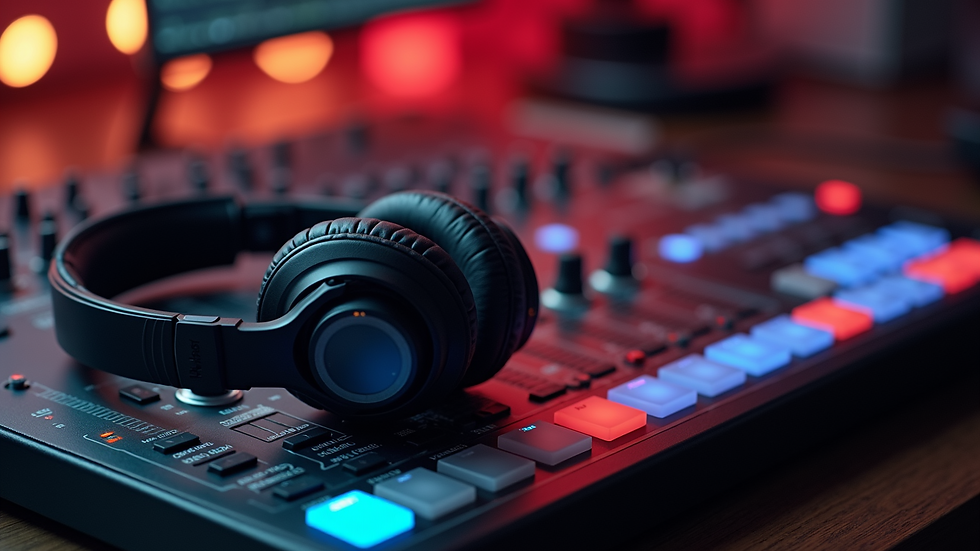Mastering Post Production Solutions for Audio
- Voodoo Sound
- Aug 4
- 4 min read
In the world of audio production, the magic often happens after the recording is done. Post production is where raw audio transforms into a polished, professional sound that captivates listeners. Whether you are working on a podcast, film, music track, or commercial, mastering audio editing techniques is crucial to delivering high-quality results. This guide will walk you through the key aspects of audio post production, practical tips, and actionable steps to elevate your audio projects.
Understanding Audio Editing Techniques for Flawless Sound
Audio editing techniques are the foundation of any successful post production process. These techniques involve manipulating and refining audio tracks to improve clarity, balance, and overall impact. Here are some essential techniques to master:
Noise Reduction: Removing background noise such as hums, hisses, or static is vital. Use noise gates, filters, or specialized plugins to clean up your audio without affecting the main content.
Equalization (EQ): Adjusting frequency levels helps to enhance or reduce certain sounds. For example, boosting mid-range frequencies can make vocals clearer, while cutting low frequencies can reduce rumble.
Compression: This technique controls the dynamic range of audio, making quiet sounds louder and loud sounds softer. Compression ensures consistent volume and prevents distortion.
Reverb and Delay: Adding subtle reverb or delay effects can create a sense of space and depth, making the audio feel more natural or atmospheric.
Cutting and Splicing: Editing out mistakes, pauses, or unwanted sections is fundamental. Precise cutting and seamless splicing maintain the flow and professionalism of the audio.
By combining these techniques, you can significantly improve the quality of your audio projects. Experiment with different settings and trust your ears to find the perfect balance.

How to Apply Audio Editing Techniques Effectively
Applying audio editing techniques requires both technical knowledge and creative judgment. Here are some practical recommendations to help you get the best results:
Start with a Clean Recording: The better your original recording, the easier the editing process. Use quality microphones and record in a quiet environment.
Organize Your Tracks: Label and arrange your audio files clearly. Group similar sounds together, such as dialogue, music, and effects.
Use Non-Destructive Editing: Work with software that allows you to make changes without permanently altering the original files. This way, you can experiment freely.
Listen on Multiple Devices: Test your edits on headphones, speakers, and different environments to ensure consistent sound quality.
Take Breaks: Your ears can get fatigued. Regular breaks help maintain objectivity and prevent over-editing.
For those looking for professional-grade results, exploring post production solutions can provide access to expert tools and services that streamline the editing workflow.

What are the 5 Steps of Post-Production?
Post production in audio typically follows a structured workflow to ensure every element is polished and cohesive. The five main steps are:
Editing
This initial step involves cleaning up the raw audio. Remove unwanted noises, fix timing issues, and arrange clips in the correct order. Precision here sets the stage for the rest of the process.
Mixing
Mixing balances all audio elements, including dialogue, music, and sound effects. Adjust volume levels, pan sounds across stereo channels, and apply EQ and compression to create a harmonious blend.
Sound Design
Add creative elements such as Foley sounds, ambient noises, or special effects. Sound design enhances the storytelling and emotional impact of the audio.
Mastering
Mastering is the final polish. It involves fine-tuning the overall sound, ensuring loudness standards are met, and preparing the audio for distribution. This step guarantees consistency across different playback systems.
Quality Control
Before release, conduct thorough listening tests to catch any errors or inconsistencies. Check for clipping, distortion, or any technical issues that could affect the listener’s experience.
Following these steps methodically helps maintain a professional standard and ensures your audio project sounds its best.

Tools and Software for Audio Post Production
Choosing the right tools can make a significant difference in your post production workflow. Here are some popular software and hardware options:
Digital Audio Workstations (DAWs): Programs like Adobe Audition, Pro Tools, Logic Pro, and Audacity offer comprehensive editing and mixing capabilities.
Plugins and Effects: Use VST plugins for noise reduction, EQ, compression, and reverb. Popular options include iZotope RX, Waves plugins, and FabFilter.
Audio Interfaces: High-quality interfaces improve sound input and output, reducing latency and enhancing clarity.
Monitors and Headphones: Invest in accurate studio monitors and headphones to hear every detail during editing.
Control Surfaces: Hardware controllers with faders and knobs can speed up mixing and provide tactile control.
Experiment with different tools to find what suits your workflow best. Many DAWs offer free trials, so take advantage of these to explore features before committing.
Tips for Efficient and Creative Audio Post Production
Efficiency and creativity go hand in hand in audio post production. Here are some tips to help you work smarter and produce compelling audio:
Create Templates: Save time by setting up project templates with your preferred track layouts, effects, and routing.
Use Shortcuts: Learn keyboard shortcuts for your DAW to speed up editing tasks.
Layer Sounds: Combine multiple sound layers to add richness and texture.
Automate Effects: Use automation to dynamically change volume, panning, or effects throughout the track.
Collaborate and Get Feedback: Share your work with others for fresh perspectives and constructive criticism.
By integrating these strategies, you can enhance both the quality and speed of your post production process.
Mastering audio editing techniques is a journey that combines technical skills with artistic sensibility. Whether you are a beginner or an experienced professional, understanding the fundamentals and applying best practices will elevate your audio projects to new heights. For those seeking expert assistance, exploring post production solutions can provide valuable support and resources to achieve outstanding results.







Comments